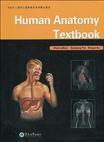人体解剖学
出版时间:2010-3 出版社:暨南大学 作者:潘三强//宿宝贵 页数:240
内容概要
Some simplified tables and a large number of color figures are used in this textbook to help the students to understand better the various structures of the human body. The terms of relatively important or major structures are printed with characters in bold, and the origins and meanings of some anatomical terms are also mentioned to facilitate comprehension. Cytological and histological aspects are also included throughout the text but limited to certain specific body parts, mainly to help the students to better understand the disease processes. As structure and function are closely related and complementary to each other, emphasis is also given to human body function where appropriate. References to anatomy literature are listed so that students can acquire a deeper knowledge of an area of interest, should they so desire. Our ultimate goal is to help students to understand how human body works and how to utilize the knowledge of anatomy for improving as well as maintaining health.
书籍目录
PrefacePart One IntroductionPart Two Cells and Tissues Section One Cells Section Two Tissues Part Three Locomotor System Section One Bones and Joints Section Two MyologyPart Four Splanchnology Section One Digestive System Section Two Respiratory System Section Three Urinary System Section Four Reproductive SystemPart Five Angiology Section One The Cardiovascular System Section Two The Lymphatic SystemPart Six Sensory Organs Section One Visual Organ Section Two The Vestibulocochlear OrganPart Seven Nervous System Section One Spinal Cord Section Two Spinal Nerve Section Three Brain Section Four Cranial Nerves Section Five The Meninges and Blood Vessels of the Brain and Spinal Cord, Ventricular System of Brain,and Cerebrospinal Fluid Section Six Autonomic Nervous System Section Seven Sensory(Ascending) PathwaysPart Eight Endocrine SystemIndex I Index 1IReferences
章节摘录
插图:Ribosomes are small granular bodies which consist of ribosomal ribonucleic acid (rRNA)and protein (Figure 2.8). They are protein-synthesizing organelles. Some ribosomes are attached to the roughendoplasmic reticulum, they synthesize proteins to be secreted, such as some hormones and digestiveenzymes. Some ribosomes are found free in the cytosol, they make structural proteins for the cell's own use.Endoplasmic reticulum (ER, ) is an extensive network of interconnected flattened vesicles andtubules bounded by membranes of the same basic structure as the plasma membrane. It is involved in thesynthesis, packaging and processing of various cell substances. It has two forms, called rough and smooth. Therough ER (RER) is attached with ribosomes and concerned with protein synthesis. The smooth ER (SER)lacks ribosomes, it cannot synthesize proteins. The SER has many enzymes, which are involved in lipid andsteroid hormone synthesis, glycogen breakdown and detoxification. Cells vary in the relative amounts of RERand SER they contain. Pancreatic cells have large amounts of RER because they synthesize large quantities ofprotein enzymes for secretion, and liver cells have large amounts of smooth ER because they are active inglycogen metabolism and drug detoxification.
编辑推荐
《人体解剖学》:华侨华人留学生高等教育系列精品教材
图书封面
评论、评分、阅读与下载
用户评论 (总计1条)
- 书很实用,而且价格很公道,适合学生购买!
